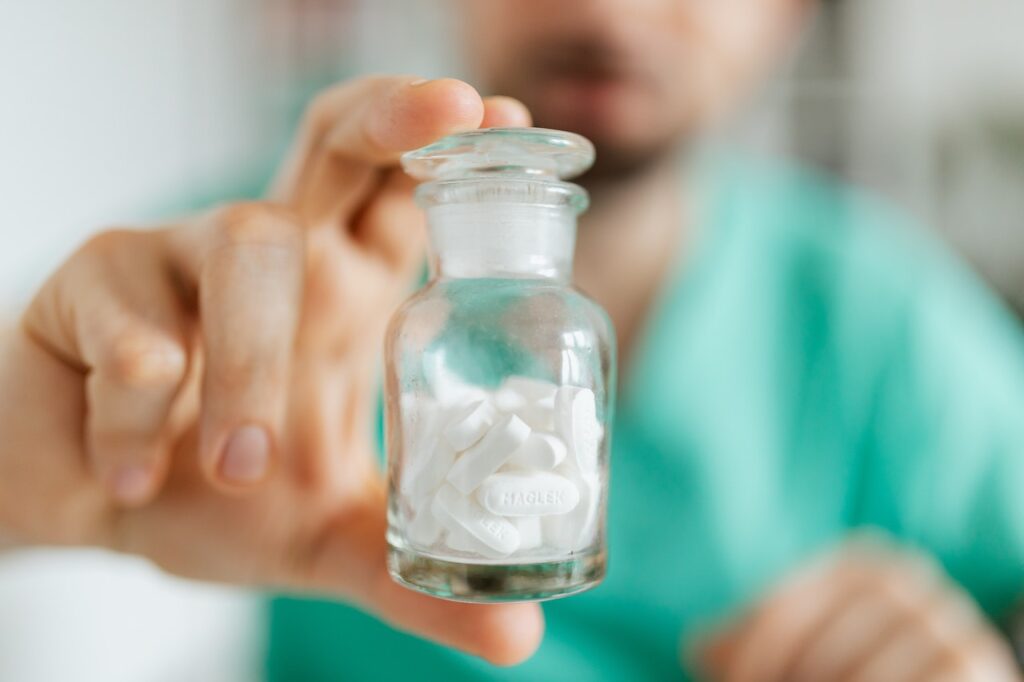Introduction
As stated by the UNODCs world drug report 2023, opioids continue to be the group of substances with the highest contribution to severe drug-related harm, including fatal overdoses. An estimated 60 million people engaged in non-medical opioid use in 2021.
Tramadol is an opioid medication that has gained significant attention in recent years due to its effectiveness in pain management. In Mexico, Tramadol is available and widely prescribed, making it important to understand its uses, regulations, and safety guidelines. One red flag pointing towards drug misuse and abuse, is related to the fact that in Mexico there is no need for a medical prescription get this drug.
What is Tramadol?
Tramadol is a synthetic opioid analgesic, which means it is a medication used to relieve pain. It is classified as an opioid because it acts on the body’s opioid receptors, (Mu, Kappa, Delta), but it has some unique properties compared to other opioids; It is primarily used for the management of moderate to moderately severe pain, being often prescribed for musculoskeletal conditions, post-operative pain, chronic pain, and pain related diseases.
Pharmacological insights:
Tramadol has a dual mechanism of action. In addition to its opioid activity, it also affects certain neurotransmitters in the brain, such as serotonin and norepinephrine. This dual action is thought to contribute to its pain-relieving effects.
It is important to realize, that the unbalance of serotonin, norepinephine accounts resonably for a huge number of mental health conditions such as anxiety and depression syndromes, as thought when ever a patienty undergoes opioid treatment many mental health conditions may temporaly improve, this paticular situation might push the patient to a drug misuse.
Tramadol should only be available by prescription, under the guidance of a healthcare professional. The dosage and administration of Tramadol are typically tailored to the specific needs of the patient and the type of pain being treated.
In Mexico any patient can get tramadol without further questioning, making it a large on going problem that needs to be solved. This is the origin of both metabolic conditions and addiction itself.

Side effects:
Like all medications, Tramadol can have side effects. Common side effects may include nausea, dizziness, constipation, and drowsiness. Serious side effects are rare but can occur, all opioids have potential to cause shortness of breath and death.
Risk of addiction:
Tramadol does have a potential for dependency and addiction, particularly if it is not used as prescribed. Certain factors can increase the risk of developing an addiction to Tramadol. These include a history of substance abuse, a family history of addiction, and the presence of co-occurring mental health disorders.
Individuals addicted to Tramadol may display signs and symptoms such as:
An increased tolerance, meaning they need more of the drug to achieve the same effects.
Withdrawal symptoms when not using Tramadol.
An inability to control or cut down on its use.
Spending a significant amount of time obtaining, using, or recovering from the effects of Tramadol.
Neglecting responsibilities at home, work, or school.
Continued use despite social or interpersonal problems.
When a person addicted to Tramadol stops using it, they may experience withdrawal symptoms, which can include anxiety, agitation, sweating, chills, muscle aches, nausea, and vomiting. These symptoms can be extremely uncomfortable and drive continued use of the drug.
Treatment:
Tramadol addiction is treatable. At OCEANICA we offer a professional residential treatment that involves a combination of detoxification (to manage withdrawal symptoms) and long-term therapy.
Dtox includes opioid replacement tharapy, also known as medication-assisted treatment, this evidence-based approach involves the use of prescription medications including:
Methadone: A long-acting opioid agonist that helps reduce withdrawal symptoms and cravings without producing the euphoria associated with other opioids.
Buprenorphine: A partial opioid agonist that can reduce cravings and withdrawal symptoms, with a lower risk of misuse.
Naltrexone: An opioid antagonist that blocks the effects of opioids and is used to prevent relapse in individuals who have already detoxed from opioids.
The primary goals of opioid replacement therapy include:
Reducing opioid cravings.
Preventing withdrawal symptoms.
Reducing the use of illicit opioids.
Supporting long-term recovery and reducing the risk of overdose.
Psychological support involves behavioral therapy, counseling, and support groups used to address the psychological aspects of addiction and teach coping strategies.
If you or someone you know is struggling with Tramadol addiction, it is essential to seek help from a healthcare professional or addiction specialist. They can provide guidance on the most appropriate treatment options.
Preventing Tramadol addiction involves using the medication as prescribed by a healthcare provider and not exceeding the recommended dosage.
If you have a history of substance abuse or addiction, it’s crucial to discuss this with your healthcare provider before taking Tramadol.
Tramadol addiction is a serious condition that can have severe physical, psychological, and social consequences. Seeking help and treatment is a critical step toward recovery and a healthier life.











